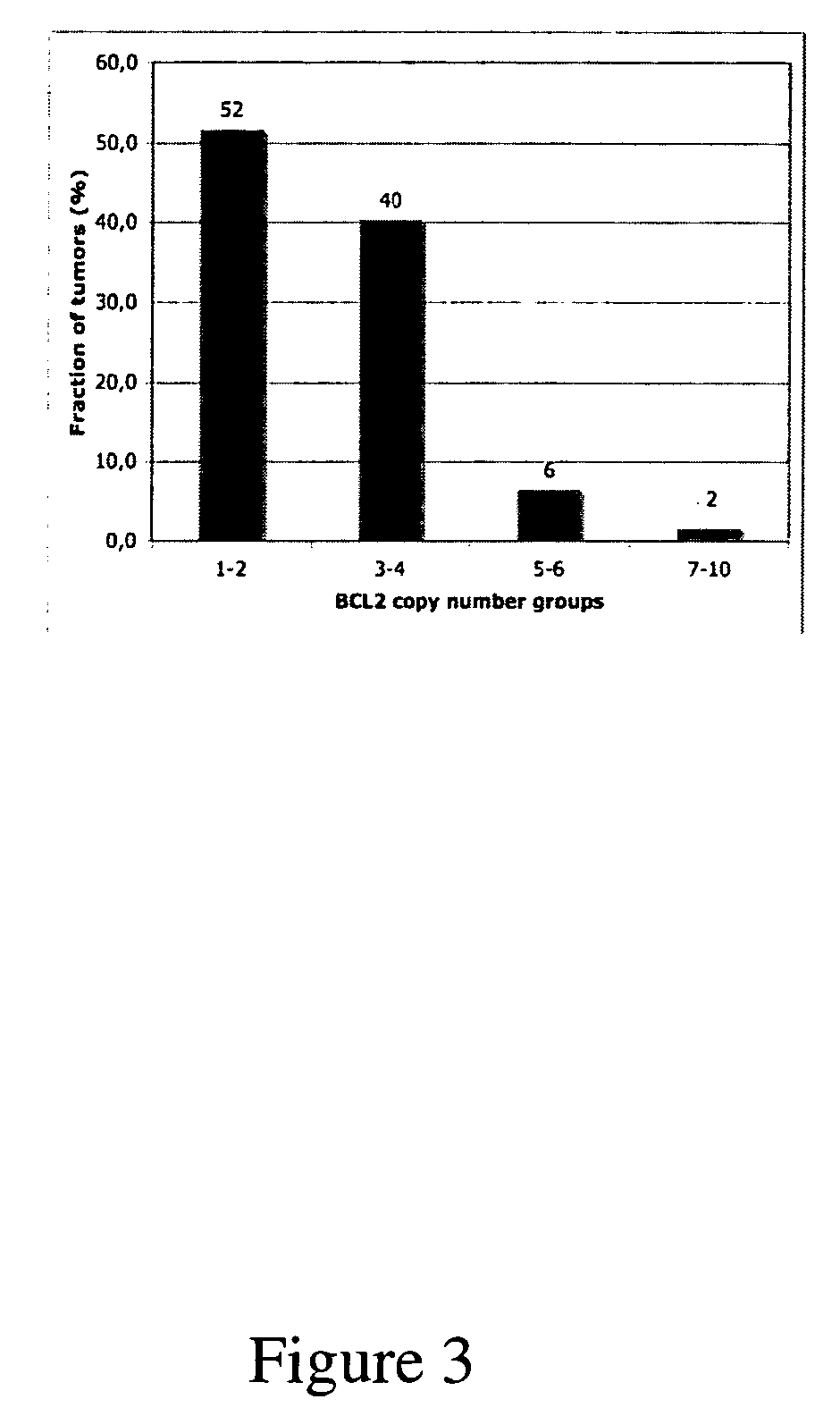Pro-GRP as a surrogate marker to predict and monitor response to Bcl-2 inhibitor therapy
a progrp and surrogate marker technology, applied in the field of diagnostic assays, can solve the problems of approximating 160,000 deaths, low survival rate for this subtype, and insignificant improvement, and achieve the effect of improving the stratification of patients and particular utility
- Summary
- Abstract
- Description
- Claims
- Application Information
AI Technical Summary
Benefits of technology
Problems solved by technology
Method used
Image
Examples
example 1
[0065]The following Example 1 describes Applicants' performance of a series of experiments. First, a whole-genome screen with high-density SNP genotyping arrays identified recurrent gene amplifications / deletions in SCLC cells. Novel recurrent chromosomal copy number gains were identified, were confirmed by real-time qPCR, and were then validated as present in an independent SNP analysis dataset of 19 SCLC tumors obtained from Zhao et al. One of these copy number gains, on 18q, was correlated with sensitivity of SCLC cell lines to the targeted cancer drug ABT-737. The clinical relevance of the 18q21 gain was then verified by FISH analysis of SCLC tumors. The genes residing in the 18q21 marker region were shown to be overexpressed in the sensitive cell lines.
[0066]Materials and Methods
Cell culture.
[0067]The following SCLC cell lines were obtained from ATCC (Manassis, Va.): NCI-H889, NCI-H1963, NCI-H1417, NCI-H146, NCI-H187, DMS53, NCI-H510, NCI-H1209, NCI-H526, NCI-H211, NCI-H345, NCI...
example 2
[0088]The following Example 2 describes determination of levels of pro-GRP in four cell lines showing elevated copy number for the Bcl-2 locus. The cell lines tested were NCI-H889, NCI-H146, DMS53 and NCI-H510, and these cell lines had shown sensitivity to the Bcl-2 inhibitor. The cells from each were cultured for seven days at 37 degrees C., then the medium was collected and stored at −70 degrees C. for one week. The medium from each cell line was thawed on ice, and then tested by a commercially available ELISA assay (distributed by IBL and made by Advanced Life Sciences Institute, Japan) for pro-GRP levels. The pro-GRP levels were estimated for the DMS53 cell line because the OD was outside the top range of the standard curve for the assay. The pro-GRP levels in picograms pro-GRP per milliliter per micrograms of total protein (pg pro-GRP / ml / μg protein) were:
NCI-H889about 2.9NCI-H146about 0.1DMS53about 9.5NCI-H510about 2.0.
[0089]Higher levels of pro-GRP correlating to the presence ...
PUM
 Login to View More
Login to View More Abstract
Description
Claims
Application Information
 Login to View More
Login to View More - R&D
- Intellectual Property
- Life Sciences
- Materials
- Tech Scout
- Unparalleled Data Quality
- Higher Quality Content
- 60% Fewer Hallucinations
Browse by: Latest US Patents, China's latest patents, Technical Efficacy Thesaurus, Application Domain, Technology Topic, Popular Technical Reports.
© 2025 PatSnap. All rights reserved.Legal|Privacy policy|Modern Slavery Act Transparency Statement|Sitemap|About US| Contact US: help@patsnap.com



